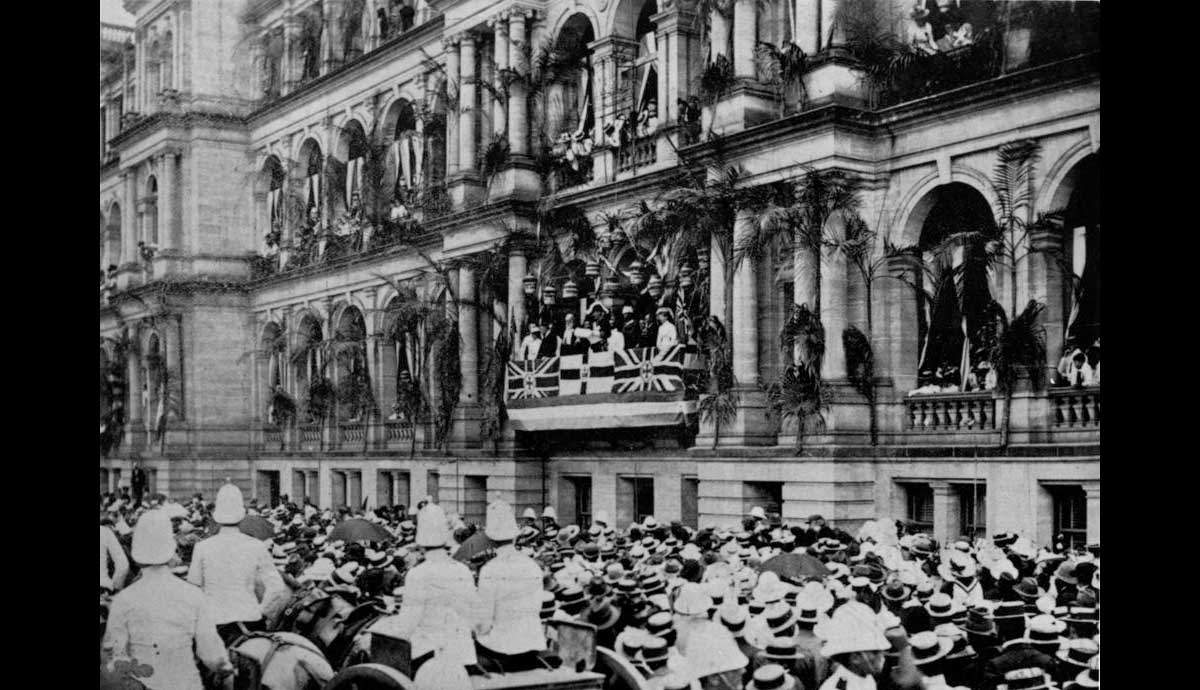July 7, 2015
Australia’s Constitution works because it doesn’t define national identity
When Australia’s Founding Fathers came together in the 1890s to draw up a constitution to enable the colonies to federate, what did they think they were doing? Looking at the debates and the Constitution itself, one thing is certain. They were not drawing up a document that defined what it means to be an Australian.
They were engaged in creating a document that would be acceptable to all parties and enshrined the political and legal principles which they had inherited from Great Britain. They looked to their British inheritance because they believed, quite correctly, that the (unwritten) British Constitution worked. They wanted a system of government that would be durable.
What they produced is not an exciting document embodying abstruse political principles, but one that has been very successful in setting out how Australian federalism will work.
Why the Constitution works
It is very important to realise that the Australian Constitution has nothing to do with identity politics. It does not deal with substantive issues, as do other constitutions, such as the Irish Constitution – which was why the Irish people needed to hold a referendum on same-sex marriage. The Australian Constitution’s focus is procedural.
The one concession to identity was the inclusion of God in the preamble. It was something that many ordinary Australians desired but was not particularly favoured by convention delegates. Edmund Barton, in particular, spoke against it. Section 116, forbidding government support of any religion, ensured that it would have no legal implications.
For this reason, Australian intellectuals have often found the Constitution to be a rather dry document not to their taste. It does not fire the imagination – especially the nationalist imagination. Nationalists would prefer statements setting out “who we are”.
The Constitution has by and large worked very well. This is not to deny that there have been problems, such as the way in which it works to confer excessive financial and taxing power on the central government. But, by and large, the Constitution works because there is a willingness on the part of both the federal and state governments to make it work. This mirrors the spirit of co-operation that brought it into being.
The problem with constitutional recognition
There are some problems, which include the Commonwealth’s power to make laws with regard to a particular race. Such a power is an embarrassment in an age of equality and should be consigned to history.
But the current move to recognise Australia’s Indigenous people in the Constitution is worrying. This is not because of its intent. That intent is an expression of the traditions of justice we have inherited from Britain, going back to Magna Carta. Rather, the problem lies in the way in which it changes the nature of the Constitution away from a procedural document by introducing issues of identity into it.
In this regard, it is worth noting that the attempt to introduce God into the preamble in the 1890s led to a vigorous campaign against such a move by the Seventh Day Adventists. They feared that it would be a prelude to the enforcement of Sunday observance.
There is much to be said in favour of recognition of Indigenous Australians somewhere in Australian public life. But it is important that any such recognition should not become the foundation for future attempts to turn the Constitution into a document that comes to focus on issues of identity. We need to appreciate that the Constitution has served us so well because its basic function is procedural.
Equally, it is important that any statement – even in the preamble – should not have any constitutional implications. It should be a simple statement of recognition. Moves to address issues of inequality must be legislative in nature, not constitutional. Constitutionally, all Australians must be treated equally.
This is not an easy or simple matter, especially taking into consideration the issue of removing the race power from the Constitution. However, Australia’s Founding Fathers did find an elegant way around the problem of finding a place for God in the Constitution. But it took much discussion.
It is only by facing the full complexity of the issue of Indigenous recognition that a workable solution will be found to this issue.
![]()
By Gregory Melleuish, Associate Professor, School of History and Politics, at University of Wollongong.
This article was originally published on The Conversation. Read the original article.
Photo: Crowds of people outside the Treasury Building, Queen Street, Brisbane, Queensland, 1901 Crowds gather to listen to his Excellency the Governor reading the Queen's proclamation on Federation from the balcony of the Treasury Building in Queen Street, Brisbane. Wikimedia
UOW academics exercise academic freedom by providing expert commentary, opinion and analysis on a range of ongoing social issues and current affairs. This expert commentary reflects the views of those individual academics and does not necessarily reflect the views or policy positions of the University of Wollongong.
